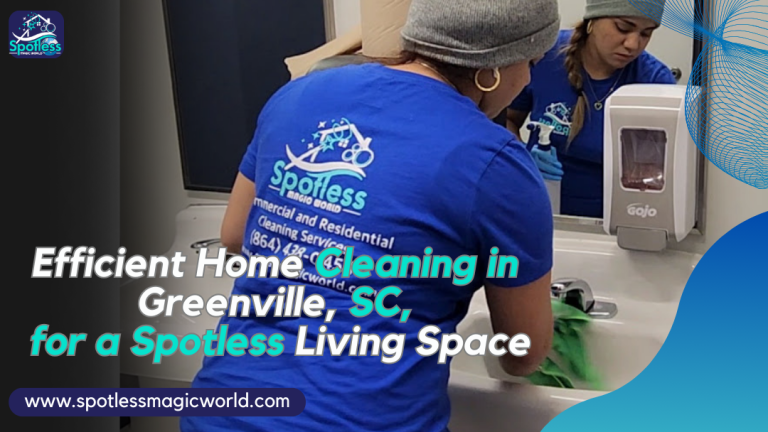Licensed And Insured

How to Clean Plastic Bathtub Stains?
You know that feeling when you’re all set for a relaxing bath, but your plastic bathtub looks anything but inviting? Those stubborn stains and grime can really put a damper on your plans. But here’s the good news—you don’t need a professional cleaner or expensive products to fix it. With some simple household items and a bit of elbow grease, you can learn how to clean plastic bathtub stains and have your bathtub sparkling clean in no time.
Why Cleaning Plastic Bathtub Stains is Important?
Keeping your plastic bathtub clean isn’t just about aesthetics—it’s crucial for your health and well-being too. Here’s why you should regularly tackle those stains and grime –
1. Health and Hygiene
- Bacteria and Mould: Stains often harbor bacteria and mould, which can lead to infections and respiratory issues. A clean bathtub minimizes the risk of these health hazards.
- Skin Irritation: Residue from soap scum and cleaning products can cause skin irritation. Ensuring your tub is free from these residues can help protect your skin.
2. Prolonging Tub Life
- Preventing Damage: Regular cleaning prevents the buildup of hard water stains and soap scum, which can degrade the material of your plastic tub over time. Keeping it clean helps maintain its integrity and prolongs its lifespan.
3. Aesthetic Appeal
- Maintaining Appearance: A sparkling clean bathtub makes your bathroom look inviting and well-maintained. It’s not just about functionality but also about creating a pleasant space for you to relax.
- Property Value: If you’re considering selling your home, a well-kept bathroom can significantly impact the perceived value of your property. Buyers appreciate a clean, well-maintained bathroom.
4. Better Cleaning Experience
- Ease of Cleaning: Regular maintenance makes deep cleaning easier. When you clean frequently, you prevent the accumulation of tough stains that are harder to remove, saving your time and effort in the long run.
Supplies You’ll Need
To tackle the cleaning of your plastic bathtub effectively and safely, here’s a practical list of supplies along with tips on how to use them efficiently for how to clean plastic bathtub stains –
1. Non-abrasive Sponge or Soft Cloth
Use a soft microfiber cloth or a non-abrasive sponge to avoid scratching the bathtub’s surface. These tools are effective for gentle scrubbing and can be used with various cleaning solutions.
2. Baking Soda
Baking soda is your go-to for eco-friendly cleaning. It’s great for scrubbing away tough stains and is safe on plastic. Sprinkle it directly on stubborn spots or make a paste with a little water for an all-over clean.
3. White Vinegar
For a powerful clean that cuts through soap scum and hard water stains, white vinegar is highly effective. Mix equal parts of vinegar and water in a spray bottle for easy application. Let it sit on stains for a few minutes before scrubbing.
4. Dish Soap
A mild dish soap can help break down body oils and residue. Add a few drops to your bucket or directly onto a damp cloth. It’s gentle yet effective for regular cleaning.
5. Rubber Gloves
Protect your hands from drying out or reacting to cleaning solutions by wearing rubber gloves. This will also give you a better grip while scrubbing.
6. Bucket
Keep a bucket handy for mixing cleaning solutions and rinsing your cloth. This helps keep everything organized and within reach as you clean.
7. Spray Bottle
Fill a spray bottle with homemade cleaning solutions, such as vinegar and water or lemon juice and water, for easy application. This method is especially handy for quick touch-ups.
8. Lemon Juice (Optional)
For an extra boost in cleaning power and freshness, lemon juice can be added to your cleaning mix. It’s particularly good for removing rust stains and adding a pleasant scent to the room.
Step by Step Guide to Clean Plastic Bathtub Stains
Here are the simple steps to effectively remove stains and restore the shine to your tub –
Step 1: Preparation
- Clear the Tub: Remove any personal items, such as shampoos, soaps, and toys.
- Rinse the Tub: Quickly rinse the bathtub with warm water to wash away loose dirt and grime.
Step 2: Apply Cleaning Solution
- Make Your Cleaner: Mix a solution of warm water and dish soap in a bucket. For tougher stains, you can use a mixture of baking soda and vinegar. Fill a spray bottle with this solution for easy application.
- Apply the Cleaner: Generously spray or spread the cleaning solution over the entire surface of the tub. Focus on stained areas and allow the solution to sit for about 10-15 minutes.
Step 3: Scrubbing
- Scrub Gently: Using a non-abrasive sponge or soft cloth, gently scrub the bathtub. Pay extra attention to stained areas. For persistent stains, apply a paste of baking soda directly and let it sit for a few more minutes before scrubbing.
Step 4: Addressing Tough Stains
- Use Lemon Juice or Vinegar: For extremely tough stains, cut a lemon in half and use it to scrub the area, or apply a paste made from vinegar and baking soda. These natural acids are effective at breaking down tough grime without damaging the plastic.
Step 5: Rinse and Dry
- Rinse Thoroughly: After scrubbing, rinse the bathtub thoroughly with clean water to ensure no cleaning residue remains.
- Dry the Tub: Use a clean, dry towel or a squeegee to dry the bathtub. This prevents water spots and mildew growth.
Step 6: Maintenance Cleaning
- Regular Touch-Ups: To keep your bathtub looking new, regularly wipe it down with a vinegar and water solution after use. This will prevent stain buildup and make deeper cleaning sessions easier.
Natural Alternatives for Cleaning Plastic Bathtubs
If you prefer to avoid harsh chemicals and opt for eco-friendly cleaning methods, there are several natural alternatives that are both safe and effective for cleaning plastic bathtubs. These solutions not only protect your health and the environment but also are gentle on your bathtub’s surface.
1. Vinegar and Water Solution
- Why It Works: Vinegar is a natural disinfectant and deodorizer that cuts through soap scum and water spots without the use of harsh chemicals.
- How to Use: Mix equal parts of white vinegar and water in a spray bottle. Spray the solution onto the bathtub surface, let it sit for 15 minutes, then scrub gently with a soft cloth or non-abrasive sponge and rinse.
2. Baking Soda Paste
- Why It Works: Baking soda acts as a mild abrasive, which helps to remove tough stains without scratching the surface. It also neutralizes odors and breaks down residue.
- How to Use: Make a paste of baking soda with a little water. Apply this paste directly on stains and areas with tough grime. Leave it for several minutes, then scrub and rinse off.
3. Lemon Juice
- Why It Works: Lemon juice contains citric acid, which is effective at breaking down stains naturally and is known for leaving a fresh, clean scent.
- How to Use: Cut a lemon in half and rub it directly on tougher stains, or squeeze lemon juice onto the affected areas. Allow it to sit for a few minutes before scrubbing with a soft brush or cloth. Rinse thoroughly afterward.
4. Hydrogen Peroxide
- Why It Works: Hydrogen peroxide is an excellent natural bleaching agent and disinfectant. It’s particularly good for lightening stains and killing mold and mildew.
- How to Use: Apply hydrogen peroxide directly to stains or spray it over the surface of the tub. Let it sit for about 30 minutes, then scrub gently and rinse away.
5. Tea Tree Oil
- Why It Works: Tea tree oil has natural antifungal and antibacterial properties, making it effective for cleaning and disinfecting bathrooms.
- How to Use: Mix several drops of tea tree oil with water in a spray bottle. Spray the solution on the tub, leave it for a few minutes, then wipe and rinse. This not only cleans but also leaves a refreshing scent.
Tips for Preventing Future Stains
Here are some proactive steps to help keep your plastic bathtub looking new –
1. Regular Rinsing
Routine Maintenance: After each use, take a moment to rinse the tub with warm water. This simple step helps wash away residue, body oils, and soap scum before they have a chance to settle and cause staining.
2. Use a Water Softener
Combat Hard Water: If hard water is an issue in your home, consider installing a water softener. Hard water can leave mineral deposits that not only stain but also can damage the surface of your bathtub over time.
3. Daily Drying
Moisture Control: After rinsing, take a squeegee, towel, or absorbent cloth to dry off the bathtub. This prevents water spots and the buildup of minerals that can lead to stains.
4. Protective Coatings
Apply a Tub Protector: Some products can be applied to create a protective barrier on your bathtub’s surface. These help repel soap scum and dirt, making the tub easier to clean.
5. Avoid Dyed Products
Careful Selection: Be mindful of using dyed soaps, shampoos, or bath products that can deposit colors onto the surface of your bathtub, potentially leading to stains.
6. Ventilation
Reduce Humidity: Always use an exhaust fan or open a window while showering to minimize humidity in the bathroom. Excess moisture can promote the growth of mold and mildew, which can stain and damage the tub surface.
7. Regular Deep Cleaning
Schedule Cleanings: Set a regular cleaning schedule for your bathtub. Consistent cleaning prevents the accumulation of grime and stains, making each cleaning session less labor-intensive.
8. Use Gentle Cleaning Agents
Avoid Harsh Chemicals: Stick to mild cleaners that are appropriate for plastic surfaces. Harsh chemicals can etch the surface of the tub, making it more susceptible to staining.
Common Mistakes to Avoid
Cleaning your plastic bathtub seems straightforward, but some common pitfalls can lead to damage or ineffective cleaning. Here are some key mistakes to avoid to keep your tub in top condition –
-
Using Abrasive Scrubbers
- Mistake: Reaching for a steel wool pad or a harsh scrubbing brush might seem like a good idea for tough stains, but these can scratch and damage the surface of your plastic bathtub.
- Solution: Always use non-abrasive tools like soft cloths or sponges designed for use on delicate surfaces.
-
Applying Harsh Chemicals
- Mistake: Using bleach, ammonia, or other harsh chemicals can discolor your plastic bathtub and weaken its surface over time.
- Solution: Opt for gentle, non-abrasive cleaners or natural cleaning solutions like vinegar and baking soda to avoid chemical damage.
-
Overlooking Regular Maintenance
- Mistake: Neglecting regular cleaning and waiting until the bathtub is visibly dirty can make the cleaning process harder and may lead to permanent staining.
- Solution: Implement a regular cleaning schedule and perform light cleaning tasks frequently to prevent dirt and grime buildup.
-
Not Rinsing Thoroughly
- Mistake: Leaving any cleaning solution residue on the bathtub’s surface can lead to film buildup and potentially cause more stains.
- Solution: Always rinse the bathtub thoroughly with clean water after cleaning to remove any leftover cleaning agents.
-
Ignoring Ventilation
- Mistake: Poor ventilation in the bathroom can lead to moisture buildup, encouraging mold and mildew growth that can stain your bathtub.
- Solution: Use an exhaust fan or open a window during and after baths or showers to keep the area well-ventilated.
-
Using Too Much Water Pressure
- Mistake: While cleaning, using a high-pressure hose or shower head to rinse the tub might seem effective, but it can actually splatter dirt and soap scum around the bathroom.
- Solution: Use gentle water flow for rinsing to control where water and soap go, ensuring they don’t end up where they aren’t supposed to be.
-
Leaving Products on Surfaces
- Mistake: Storing bottles of shampoos, conditioners, and soaps directly on the edges of the tub can lead to rings and stains.
- Solution: Use a hanging shower caddy or a nearby shelf to keep these products off the tub’s surface, preventing stains and scum accumulation.
Wrapping Up
Maintaining a clean and stain-free plastic bathtub is essential for a refreshing home environment. By employing gentle cleaning methods and sticking to a regular maintenance schedule, you can keep your bathtub in top condition. Avoid common cleaning pitfalls to ensure your bathroom remains a welcoming space. At Spotless Magic World, we understand the value of a pristine home. Follow these straightforward tips, and enjoy a beautifully maintained bathroom that complements your clean and serene living space.



